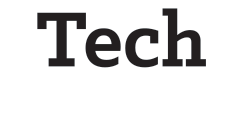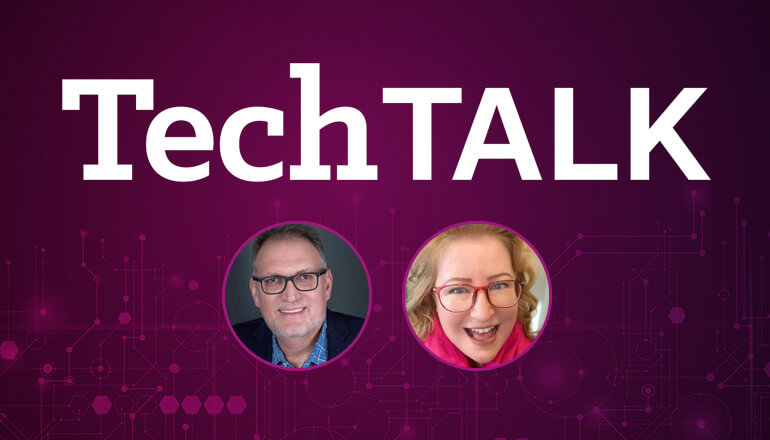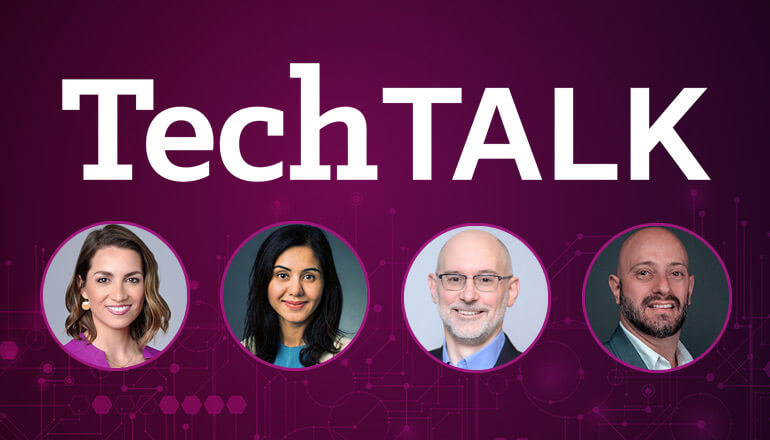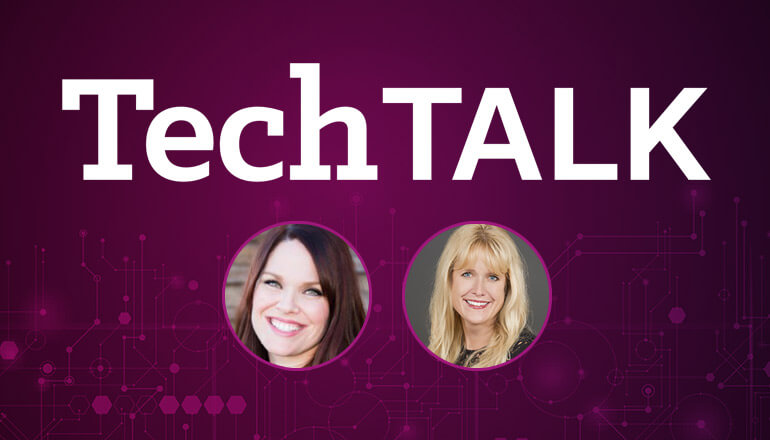Audio transcript:
Device-as-a-Service: The Future of Hardware Management
John
Hello, thanks for joining us for another exciting Tech Talk. My name is John Casebeer and I'm a service product manager for connected workforce at insight. And joining me today is Sharon Green, who is a service deal of marketing manager at Dell Technologies. So Sharon, you know, just to set things up here today for our talk, you know, today's employees are really expecting it, consumer like experience in their, in their devices. During this example, if I walk into, you know, any carriers shop, I can walk out the cell phone, that's ready to go. I can use it. I log in and all my pictures and everything are there. And that's what my argument, you know, people are expecting today when they're with their working devices as well. And on top of that all, you know, the world is seemingly turned upside down and the new normal is emerging and we're finding the IT teams are struggling on focusing on providing remote workers, what they need to provide them a positive working experience while balancing security concerns, budgets, and resources. So, Sharon, can you tell us, you know, how you see your customers reacting to this?
Sharon
Yeah, John, absolutely. So our customers are, you know, of course a lot of them, you know, went into the pandemic thinking, okay, I've got to work through something that's a remote solution to get my people to where they can work. And that's kind of morphed over the past 18 months to where something that was temporary is now really more of a permanent solution. So now what I put together as temporary, I need to like work through. So customers are in different parts of their journey. Some of them are going back in the office. Some of them are staying full-time remote and some of them are working this hybrid. So it depends on what our customers are really in that journey. Is like, are they, do they need to finalize that, that hybrid solution? Or do they need to start pulling things back in the office? So it depends on where customers are then journey, but it was customers go to that modern workforce solution. They really are looking at how do I manage somebody remotely? How do I get systems out to people? How do I adapt my protocols to allow for the security that's needed for a remote workforce? And all of that is things that we have to take into consideration as we're helping customers through this, this journey as it is right now. So, I mean, John, you work with customers every day. Are you seeing IT providing this anywhere, anytime experience and, and what does that look like?
John
Well, so most customers are looking to implement sort of a modern endpoint management solution in order to provide the experience that you're talking about. But for the most part, this is a journey. And the key to any journey is to having a really good plan and have it mapped out how to get to where you want to go. And so, the bottom line is you really need to have a documented plan. And that's, we look at our customers. The path that they take is, is a lot different. Some customers are, are good to go. They know the technologies, there are well aligned and they, they, they go out alone. Others have asked, you know, organizations like us and, and, and Dell to go in and help facilitate a series of workshops to figure out what that map looks like in the, your, how the journey their journey is going to go. And others have just looked to say, hey, let me use your enablement services to get me there faster, but, you know, however you get there, the results can really be staggering in some of the customers that we've assisted in the past, who have been more on a traditional deployment activities with imaging and so forth, can see things, you know, the length of time to get an asset into a new employee's hands or a new asset into an existing employees has take up to 15 to 18 days. And then once that assets there, then there's a whole procedure that, that employee employee has to do to get a functional, change the password, download some apps, you know, download all their, their documents, et cetera. And so they let, could lose up to a half day of productivity, just, just getting ready to make that system usable. And so as customers have moved to the modern solution, we've seen that time reduced to anything like two to three days, which is a great turnaround. When that customer, when your customer, your employee gets that device, they turn it on and they're good to go. No other bandits bandages need to be taken there. And so we, and you, Dell, I think we felt probably hundreds, if not thousands of customers on this journey. So anyways, Sharon, for organizations still operating in sort of this legacy in house model, you know, how can organizations start to adopt something like device as a service to make this transition smoother over time? And what types of efficiencies would a model like that develop?
Sharon
So first and foremost, before customers can really start seeing these efficiencies that, that they're looking for, they have to define where they are. So defining that plan again, something that, you know, Insight and Dell are well versed in helping our customers, you know, help them with that plan. But once you have that plan, then you start looking about how do I manage these system, systems remotely, which can, to your point with the turnaround time on getting new systems, that's an large efficiency that we see with our customers is the fact that they're at, we're able to provision systems remotely for them and deliver the systems directly to an end user. That's a big part of the efficiency, but also being able to manage those environments remotely and manage the security on those devices remotely. I mean, kind of gone are the days where everybody's in an office and you're on one network and, and Hey, we, we can facilitate everything because at some point somebody is going to be in the office and we can do that. It's not really that way anymore. So you need to have this solution that allows you to update a system anytime, anywhere. And that's a lot of where we're seeing these efficiencies as customers move to these, you know, modern management solutions and devices. A service is a key component of that because it allows us to take security, this fully managed environment and roll it into a solution that actually helps our customers get get there. So, you know, end point management can take planning and it takes customers a lot of time. And many times they're concerned about the cost that's going to be required to move through this journey. What have you seen when working through this, this journey with customers?
John
Yeah, so we have seen devices, a service, be a good option for customers that are really need to make some investments to get into this modern management model a little bit more palatable while keeping their devices refreshed. So in fact, you know, I was reading an IDC survey that said basically around 40% of their respondees have been looking for dads as a model to address some of their IT needs. And so when you really unpack that, you know, many customers are actually looking at Dez because they're just starting to question and how do they consume devices today and are they really want to own, you know, thousands of PCs and have to refresh their memory every three to four years, you know, is there a better way? So Daz offers them a path there so that they can move towards a per device per month model that can help them accelerate the refresh of devices and keep them consistent over year to year. And from a budget standpoint, consistent over a year, year, over year, as well as free up budget in the front end that they could use the fast track, modern endpoint management, their manage endpoint journey. So no matter where you are at the journey, you can always use device as a service, whether you'd use it right out of the, out of the gate to do everything, or use it up in the front end, to free up some capital. And you're one to make an investment and, and really fast tracking that journey of, of modern modern management there is, there's just actually no real right path, but Daz does provide an option to help smooth things out and make it just a little bit more palatable. So, you know, I think, you know, if we reflect and, you know, we lost Colin Powell recently, and he had a quote that the longer you wait to make a decision, the more likely that decision will be made for you. And you're not necessarily going to like the outcome. So Sharon, I'll just ask you what would be the impact that customers that are not taking action now and just, you know, going, you know, as a coach right now.
Sharon
I mean, I think first and foremost, it's employee productivity. And I think that's the reason customers are, are looking to make this transition research shows that, you know, a PC that's four years old is three times more likely to need repair. And this usually, you know, IDC says this results in about 157 hours of productive time lost, which is, you know, three times the amount of newer PC. So device as a service makes it easier for our customers to allocate that time and resources to making these strategic moves. And like I said, that at the end of the day supports the customer's business goals. At the end of the day, the longer you wait to refresh, the more prone you are to issues. And when you accelerate this adoption, you know, you, the modern workplace, the costs become more predictable. So when you start doing everything as a device, as a service model, you know, you roll in your security, you roll in your management, you can roll in your support, you roll in the device. Everything becomes very predictable. You know, when you're going to retire systems, you know what it's going to be to put those new systems back into the environment. And it really becomes a consistent journey for our customers. And it really becomes a much easier management for both the finance side of the business, as well as the it manager managing that budget. So that's where you, like I said, you're going to see those efficiency, any last words, John, would you like to share?
John
Yeah, no, this is summarized is that, Hey, you know, you've got to look at this as a journey and, you know, it's really important to have a plan. And then, so wherever you are in that journey, if you're just starting out or you're at the end of it, your insight and Dell technologies together, we can help you get to where you need to be on that modernization path and hopefully get you there a little bit faster. So I just wanted to thank you again for joining us today, Sharon, and we really appreciate your continued partnership with, with yourself and Dell.
Sharon
Thank you.
John
Have a good day.









